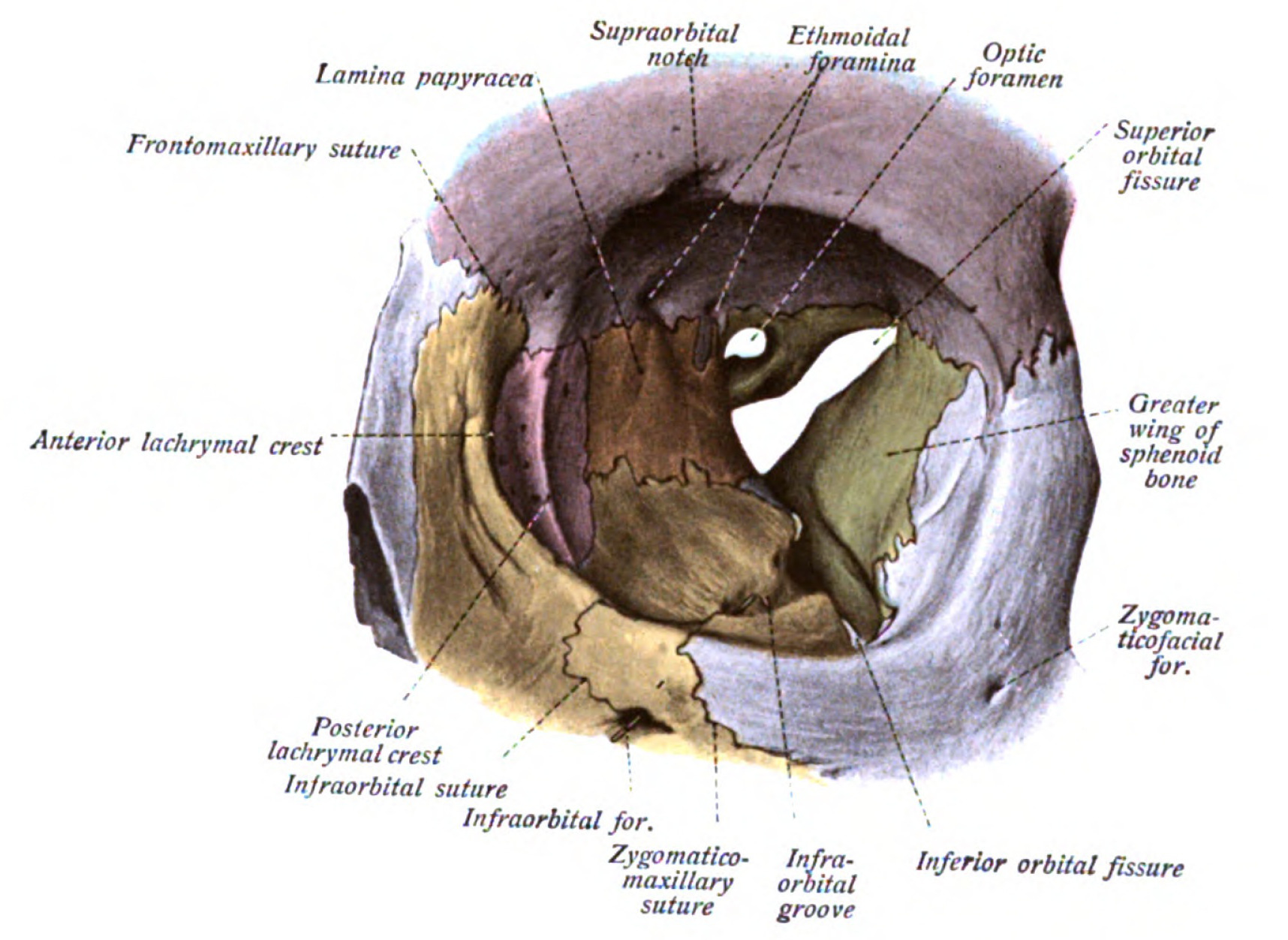Playlist
Show Playlist
Hide Playlist
Eyelids and Lacrimal Apparatus
-
Slides Anatomy Eyelids Lacrimal Apparatus.pdf
-
Download Lecture Overview
00:01 Now let's look at the eyelids that protect the eyeball. 00:07 The space between the eyelids is called the palpebral fissure because it's a space and palpebral refers to eyelids. 00:16 The corners of this palpebral fissure are called the canthi, so there's a lateral canthus and a medial canthus. 00:25 And at the medial canthus is a little collection of tear fluid called the lacrimal lake, where there's often a bump called the lacrimal caruncle. 00:36 And on the areas of the eyelids superior and inferiorly just to the side of this caruncle, our little bumps called lacrimal papillae where we find the lacrimal punctum which are little openings that are going to allow drainage of tear fluid. 00:57 If we were to go lateral to this lacrimal papilla. 01:00 Alongside the eyelids, we would call that portion the ciliary part and that's the part where we would find the eyelashes. 01:09 The part medial to that without any eyelashes would be called the lacrimal part. 01:15 Along the deeper aspect of the eyelid margin are more openings. 01:20 These are called meibomian orifices, and their openings for things called the meibomian glands. 01:26 More superficially is where we would find little tiny hair follicles which we call the eyelashes. 01:33 In the in between, there's a faint line called the gray line which actually represents the very terminal edges of the orbicularis oculi muscles. 01:46 Now let's look at a sagittal cross section of the upper eyelid to see some of the finer structures that lie within. 01:55 The inner lining of the eyelid is lined by conjunctiva. 02:00 We call it palpebral because it's related to the eyelid, but it's still conjunctiva just like the rest of the conjunctiva that sits on the surface of the eyeball, and in fact is continuous with it. 02:14 There's protection in the eyelid through this thick connective tissue that forms a tarsal plate. 02:22 And the tarsal plate here connects to the LPS or levator palpebrae superioris muscle via a wide flat tendon called the aponeurosis. 02:34 We also see just deep to this tarsal plate, some glands. 02:40 And these are called the meibomian glands. 02:43 And they're a type of sebaceous gland that's going to secrete an oily lipid fluid that's going to sit over the tear film to prevent it from evaporating. 02:56 If we look a little more anteriorly, the conjunctiva is going to turn into skin that's continuous with the rest of the skin of the face. 03:06 We're also going to find on this side of the tarsal plate or orbicularis oculi muscle especially the palpebral part or the part that goes down into the eyelid itself. 03:18 And there will be submuscular connective tissue deep to it and superficial will be the subcutaneous connective tissue. 03:26 And here we can see the follicles for the eyelashes which are follicles very similar to other hair throughout the body. 03:33 And we also have associated glands that are going to feed the eyelash itself called the glands of moll and zeiss. 03:43 The glands of moll are modified apocrine sweat glands, whereas the glands of Zeiss are sebaceous glands. 03:51 And those represent different forms of glandular secretion. 03:56 Either way, secrete a substance onto the surface of the eyelashes. 04:02 Unfortunately, sometimes they can become blocked and infected, leading to a stye. 04:09 If we zoom out a little bit, so we can see the relationship of this eyelid to the rest of the eyeball, we can trace that conjunctiva all the way back to the eyeball. 04:20 Starting at its distal most end, we have the marginal portion of the conjunctiva right before it's about to transition into skin. 04:29 Then we have the tarsal portion sitting beneath the tarsal plate. 04:33 Then we have the orbital portion before making a turn of what's called the fornix. 04:40 As we reach the eyeball itself with the bulbar conjunctiva, which terminates at an area called the limbus. 04:48 So we call this portion the limbus because it's the limit between the conjunctiva and the cornea. 04:58 Now let's take a look at the lacrimal apparatus or the machinery of tear production and drainage. 05:06 Tears are produced by the lacrimal gland and it has an orbital part and a palpable part and it sits in the upper outer aspect of the orbital cavity. 05:19 Down in the lower inner aspect, we have the drainage apparatus. 05:24 We have the lacrimal lake where tears form a little bit of a pool before entering the lacrimal punctum to be drained through the lacrimal ducts into the common duct and finally into the lacrimal sac. 05:39 This will drain through the nasolacrimal duct into the inferior nasal meatus that sits just below the inferior nasal concha in the nasal cavity.
About the Lecture
The lecture Eyelids and Lacrimal Apparatus by Darren Salmi, MD, MS is from the course Special Senses.
Included Quiz Questions
What structure allows for the drainage of lacrimal fluid?
- Lacrimal punctum
- Lacrimal caruncle
- Lacrimal lake
- Lacrimal papillae
- Lacrimal canthus
What marks the edge of the ocularis muscles?
- Gray line
- Eyelashes
- Lacrimal lake
- Canthus
- Meibomian orifice
What gives strength to the eyelid?
- Tarsal plate
- Palpebral conjunctiva
- Levator palpebrae superioris
- Aponeurosis
- Levator palpebrae inferioris
Which of the following is a modified apocrine sweat gland?
- Gland of Moll
- Gland of Zeis
- Meibomian gland
- Eyelash follicles
- Tarsal plate
Customer reviews
5,0 of 5 stars
| 5 Stars |
|
5 |
| 4 Stars |
|
0 |
| 3 Stars |
|
0 |
| 2 Stars |
|
0 |
| 1 Star |
|
0 |




